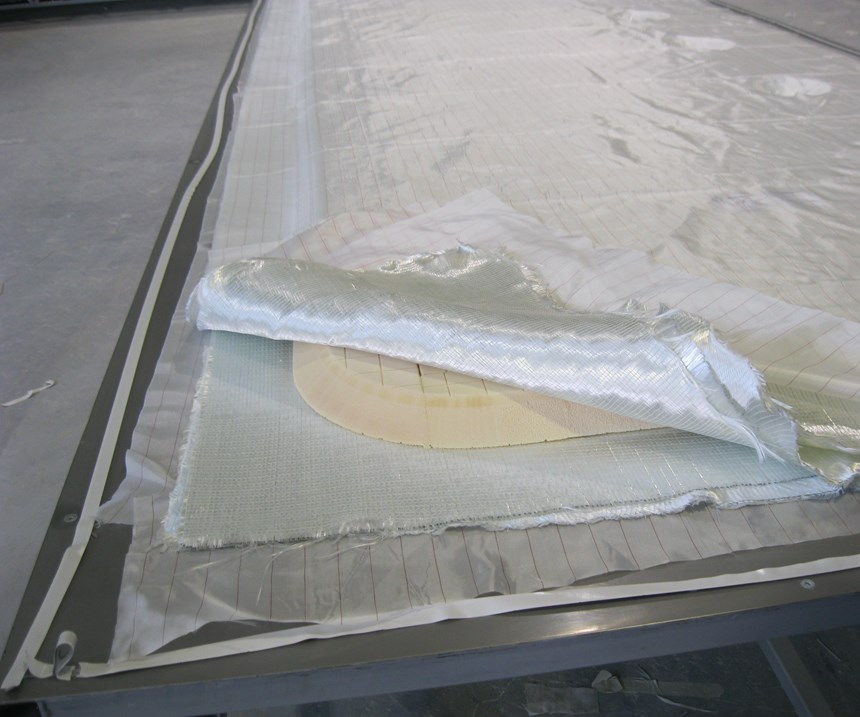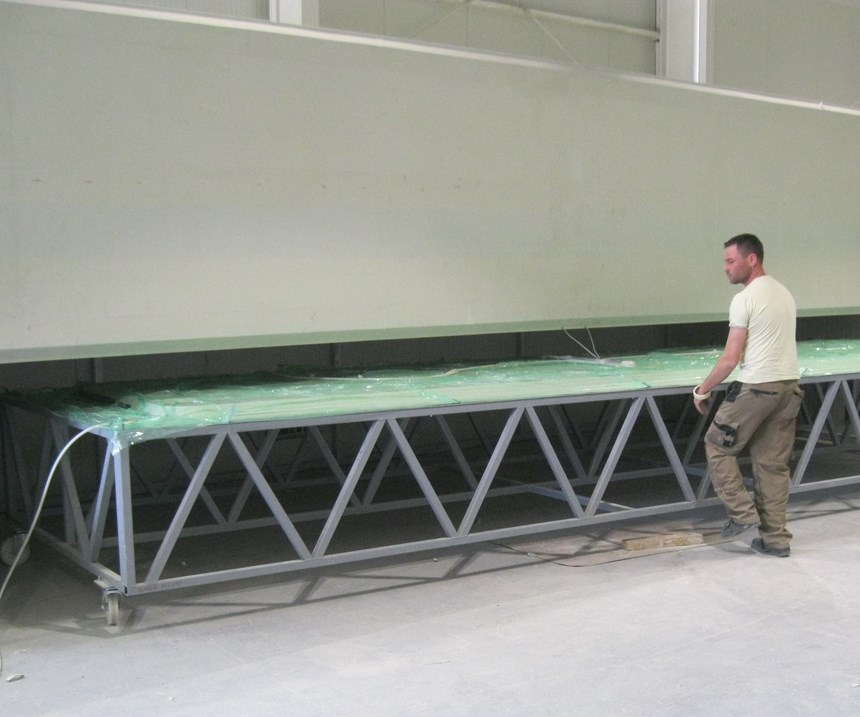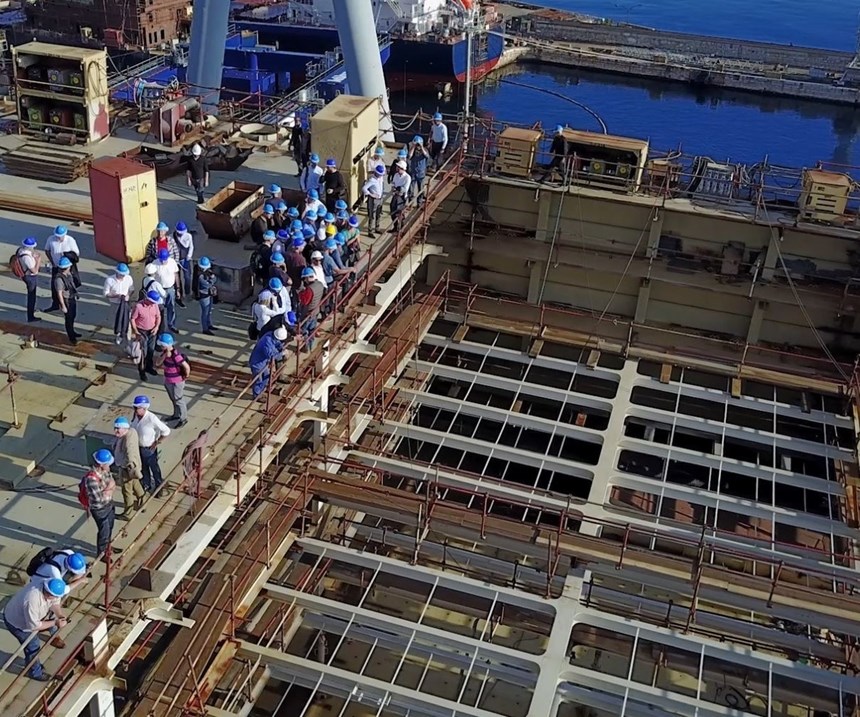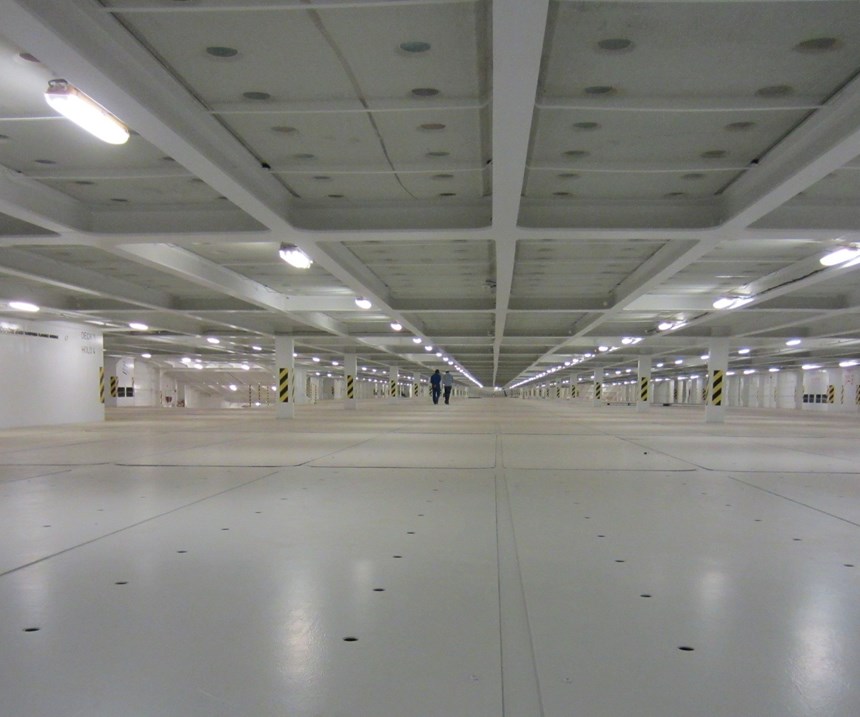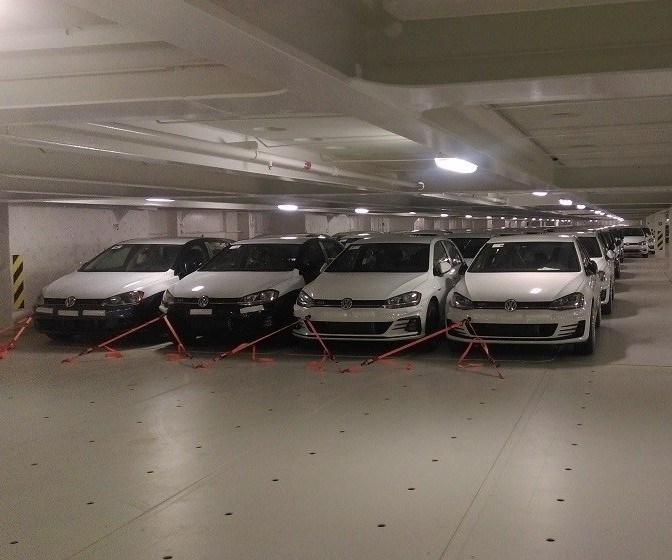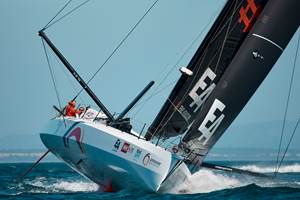“First of its kind” and “best in class” are terms often misappropriated. But they’re fitting labels for Siem Car Carriers’ (London, UK) Cicero, a roll-on/roll-off (ro/ro) shipping vessel that now carries up to 6,900 cars per trip across the Atlantic Ocean. Designed and built by the Uljanik Group (Pula, Croatia), the Cicero features a 2018 JEC Innovation Award-winning composite innovation that reportedly makes it the most fuel-efficient vessel in the pure car truck carrier (PCTC) class of ro/ro ships.
More than 1,000 PVC foam-cored glass/polyester sandwich panels form the floors of the top three of the ship’s 13 vehicle decks, making Cicero not only the first vessel of its kind to use composite floor panels but, according to core material supplier Diab International AB (Laholm, Sweden), also the first extensive shipping industry application of sandwich composites.
Design challenges
Challenges were encountered immediately in the project’s sheer size and the physical performance requirements for the decks. The 200m long, 32m wide Cicero’s top three decks total 12,600m2 and must accommodate, total, about 1,500 cars.
To achieve required strength and stiffness, conventional steel decks use steel plating stiffened by transverse web frames and longitudinal stiffeners. In the case of the composite decking, however, fire safety requirements established by the International Convention for the Safety of Life at Sea (SOLAS), a maritime treaty that sets safety standards for merchant ships, required that the deck’s structural integrity still be fully ensured by structural steel components. For that reason, the composite panels were designed to provide enough strength and stiffness to minimize the under-panel steel support required. The new decks, therefore, support the composite floor panels with a grid of steel frames into which the panels are fastened with flexible bolted joints. Under-panel support is provided by two small transverse steel bars.
For this first composite deck application, Uljanik used one design for all the panels, optimized for the worst load case, which occurs at the foremost panel, where hydrodynamic forces are greatest (due to the ship’s movement through the seas), explains Vito Radolović, Uljanik’s senior designer. “For future designs,” he points out, “there could be two or more different panel types to reduce weight and cost even more.”
Finite element analysis (FEA) revealed that the optimum sandwich panel faceskin design would be a three-ply biaxial laminate (±45°, 0/90°, ±45°). Although a combination of quadraxial and biaxial products also was considered, Radolović reports the all-biaxial schedule produced the necessary performance properties at a more desirable price point.
FEA results also favored poly vinyl chloride (PVC) over polyethylene terephthalate (PET) and polyurethane (PUR) for the foam core material. The Uljanik team designed the core using a mixture of Diab’s Divinycell H80 and H100 PVC. The higher density H100 meets the needed strength requirements at the panel’s edges, while the lower-density H80 is still sufficiently strong for the panel’s interior but saves weight and cost. The three decks use a total of 7,700m2 of H80 and 2,300m2 of H100.
The floor panel design also needed to accommodate lashing fixtures that help immobilize cars during transport. Each panel features 22 holes into which lashing hooks are inserted (see drawing). Lashing holes are reinforced with 2-mm steel plate inserts, which are bonded to the laminate so that the hook contacts only metal. The final version of the steel insert closes the bottom of the lashing hole with a steel plate to improve fire safety.
Shipbuilding challenges
Although the ship meets SOLAS fire safety requirements independent of the composite panels (i.e., dependent exclusively on the steel structural elements), the ship’s owner commissioned a fire safety assessment to demonstrate that the alternative design (with composite decks) achieves fire safety equal to that of the conventional design (with steel decks). Conducted by RISE Fire Research AS (Boras, Sweden), it revealed composite deck disadvantages that included the potential for greater linear (same deck) fire growth rate, more compromised panel structural integrity, and toxic smoke due to hydrochloride creation from burning PVC. But, the panels also demonstrated delayed deck-to-deck fire spread, due to the panels’ insulating effects and the closed lash holes. This is expected to improve both cargo and crew safety. Additionally, the composite panels — unlike steel plates — insulate crew members from the heat of a below-deck fire, so escape routes can cross panels on overhead decks. Another challenge, Radolović says, was how to integrate the composite panels into the shipbuilding process. “The main challenge was to adjust the composite part to standard shipbuilding practice in a steel-oriented production environment,” he recalls. Specifically, Uljanik carefully scheduled assembly to finish all “hot works” (welding, cutting and other heat-producing operations) before the composite panels were installed, thus making panel installation a late-stage process. Additionally, assembly tolerances where steel and composite parts meet had to comply with standard shipbuilding practice of ±5 mm.
Manageable economics
To make composite decks economically feasible, Uljanik succeeded in finding fabrication materials and processes that result in a production cost equal to that of traditional steel decks. For the panel laminates, polyester, vinyl ester and epoxy resin systems were considered, and polyester chosen for its cost and its properties favorable to vacuum infusion, the panel fabrication method, also chosen for its cost-efficiency. Further, using well-established materials and simple geometries in the floor panels enabled shorter lead times as well as improved manufacturing reliability and quality.
Fabricator Brzoglas d.o.o. (Kaštel Novi, Croatia) produced the panels for Uljanik, using SAERTEX (Saerbeck, Germany) biaxial non-crimp glass fabric. “The factory helped us by producing the exact width of rolls that we needed,” says Brzoglas’ project lead Petar Rogulj. The panels’ flat design made positioning of the glass “not a problem,” he adds. “We just applied it on a horizontal mold.” Brzoglas selected Polynt Composite USA Inc.’s (Durham, NC, US) trademarked Polylite isophthalic polyester resin. Lamination, vacuum infusion, cure and demolding took about 4 hours per 6.45m-by-1.57m panel. In the end, 1,043 panels were molded. Panel skins achieved 74% fiber content by weight. Each panel weighs 155 kg.
High watermark
Because the floor panels reduce weight in the ship’s uppermost decks, weight savings are doubly beneficial, Radolović says. First, the three composite decks are 25% lighter than three steel decks, saving 230 tons. Second, the lighter upper decks lower the ship’s vertical center of gravity (VCG). Therefore, less ballast is needed to ensure the ship’s stability. “Because the weight reduction is in the upper zone,” he notes, “we were able to reduce the weight of ballast in the double bottom, for about 2.5 times the deck weight reduction.” The result is that the Siem Cicero has a 4.5% (equal to approximately 2.1 MT/day or more than 2,000 liters/day) comparative reduction in fuel consumption. Alternatively, for the same fuel consumption as a ro/ro with all-steel decks, the Cicero may increase its payload by as much as 805 tons.
As measured by fuel consumption per car-equivalent unit (CEU), a standard fuel-economy rating for PCTC vessels, the Cicero reportedly has the lowest in its class. This means lower operating cost for Siem Car Carriers, which is using the Cicero to transport primarily Volkswagen cars from Europe to North America. The composite decks also will reduce maintenance costs because they do not corrode. Environmental benefits springing from the fuel savings include reduced fuel oil consumption and carbon dioxide emissions.
Uljanik is building a sister ship of Siem’s Cicero, using the same design. Delivery is scheduled for this year.
Continuing developments
Since 2006, Uljanik has focused R&D efforts on lightweight ship structures, and this emphasis continues as the company participates in European Union (EU)-sponsored programs and collaborates with composites industry partners. Initial funding for the Cicero decks design was through the European Commission’s (EC’s) DE-LIGHT transport program (2006-2010). Today, Uljanik remains an active participant in the RAMSSES Project — Realization and Demonstration of Advanced Material Solutions for Sustainable and Efficient Ships — which also helped fund Uljanik’s work leading to the Cicero’s composite decks.
RAMSSES is part of the EC’s Horizon 2020 Work Program, a €77 billion (~US$95 billion), seven-year (2014-2020) EU research and innovation funding program. RAMSSES is funding ongoing work on cargo deck systems, including advancements in Uljanik’s composite floor panels, as well as pultruded composite beams, joints and outfitting elements (e.g., lashing devices, lifting elements). The work includes development of fabrication, assembly, outfitting and repair processes for these composite elements. The RAMSSES Web site points out that the composite panel solution may be applicable not only to other ships but to deck plating for bridges or offshore platforms as well.
Perhaps most encouraging about this project is that it demonstrates, once again, that the intelligent use of composites not only reduces weight and operational cost in a specific application at no additional manufacturing cost, but also generates additional benefits that cascade through a project to completion, with ripple effects that prolong a product’s service life, reduce the need for maintenance and repair and protect the environment.
Related Content
Pro-Set named official materials supplier for New York Yacht Club American Magic
Competitive sailing team prepares for the 37th America’s Cup beginning in August 2024 with adhesives, resins and laminate testing services for its AC75 monohull construction.
Read MoreRefurbished Einstein yacht demonstrates innovative composites repair and redesign
Years of creative engineering work went into resurrecting the composites-intensive IMOCA 60 racing yacht — with award-winning results.
Read MoreLarge-format AM speeds plug production for manufacture of composite boat molds
Hungarian manufacturer Rapid Prototyping transitioned its conventional foam milling process to 3D printing to produce faster, higher quality, recyclable foam plugs and composite boat molds.
Read MoreEvolving natural fiber technology to meet industry sustainability needs
From flax fiber composite boats to RV exterior panels to a circularity model with partnerships in various end markets, Greenboats strives toward its biomaterials and sustainable composites vision in an ever-changing market.
Read MoreRead Next
All-recycled, needle-punched nonwoven CFRP slashes carbon footprint of Formula 2 seat
Dallara and Tenowo collaborate to produce a race-ready Formula 2 seat using recycled carbon fiber, reducing CO2 emissions by 97.5% compared to virgin materials.
Read MoreVIDEO: High-volume processing for fiberglass components
Cannon Ergos, a company specializing in high-ton presses and equipment for composites fabrication and plastics processing, displayed automotive and industrial components at CAMX 2024.
Read MoreDeveloping bonded composite repair for ships, offshore units
Bureau Veritas and industry partners issue guidelines and pave the way for certification via StrengthBond Offshore project.
Read More



